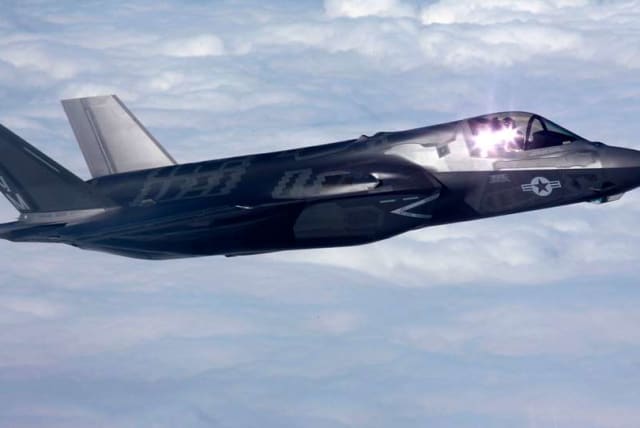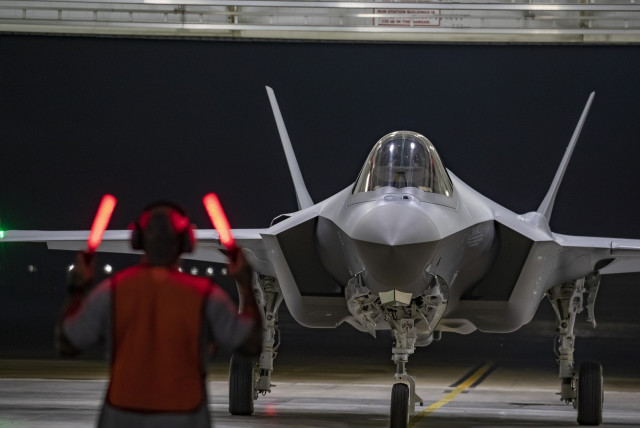US Marines land F-35B on Southern California highway

The F-35A, or Israel’s customized version, the F-35I, has greater capabilities as a distance fighter than the F-35B, and Lockheed Martin has sold it about five times as much globally.
The US Marines just landed an F-35B Joint Strike Fighter on an old 50-foot-wide highway in Southern California, refueled and rearmed, and launched back off into the sky, according to Lockheed Martin and the War Zone on Thursday.
On top of the F-35B performing this remarkable vertical-style landing, the Marines also established an improvised forward arming and refueling point to handle other kinds of aerial vehicles in the same area.
Israel does not possess the F-35B fighter at the moment, but instead has multiple squadrons of the classic F-35A fighter, and ordered another 25 F-35As in early July, which would bring Israel to 75 F-35s.
A statement from the ministry in early July did not give a timeline, but sources have previously indicated to the Jerusalem Post that even if Israel would formally order this third round of 25 aircraft sometime in 2023, it could take until 2026-2027 for the deliveries to come through.
The F-35 is considered crucial in the MABAM “war between wars” against Iranian proxies in Syria as well as in the event that the IDf would need to eventually strike Iran’s nuclear program.
It has stealth technology which makes it more able to strike targets throughout the Middle East with impunity and its surveillance and intelligence capabilities far exceed Israel’s older F-16 and F-15 aircraft.For example, it is said to be easily capable of outwitting Iran’s S-300 anti aircraft missile defense system, and possibly even the S-400 system, whereas other Israeli aircraft would have more trouble.
Israel has its own version of the aircraft
The F-35A, or Israel’s customized version, the F-35I, has greater capabilities as a distance fighter than the F-35B, and Lockheed Martin has sold it about five times as much globally. The F-35B, however, has the unique vertical landing capability.
Jerusalem is still keeping an eye on the fighter, especially when it makes headlines as it did this week.
According to the report, the US Marine Corps knows that to win future conflicts in the Indo-Pacific theater, “they will have to work like never before with the other services, and do so from very austere locales.”
This week, the Marines of Operational Test and Evaluation Squadron One (VMX-1) gathered nine squadrons and other units from the Marines, Air Force, and Navy to conduct another round of the cyclical training event known as ‘Obsidian Iceberg.’
The event “is an organic effort to realize the distributed operations concept for the (short take-off and vertical landing) STOVL-capable F-35B by solving operational challenges associated with operating a fifth-generation fighter at remote locations that have little organic logistical support, let alone long, tidy runways,” said the report.
The spot where the US Marines conducted the drill was between various train tracks and route I-5 near Camp Pendleton.
In fact, the old road used to be part of the Pacific Coast Highway and has power lines and ditches to the west and active train tracks a few yards to the east.
Known as VSTOL-101, the road served for many years as a practice landing site for Marine Harriers, but VMX-1 resurrected the site for the unique training event with the F-35B.
Jerusalem Post Store
`; document.getElementById("linkPremium").innerHTML = cont; var divWithLink = document.getElementById("premium-link"); if (divWithLink !== null && divWithLink !== 'undefined') { divWithLink.style.border = "solid 1px #cb0f3e"; divWithLink.style.textAlign = "center"; divWithLink.style.marginBottom = "15px"; divWithLink.style.marginTop = "15px"; divWithLink.style.width = "100%"; divWithLink.style.backgroundColor = "#122952"; divWithLink.style.color = "#ffffff"; divWithLink.style.lineHeight = "1.5"; } } (function (v, i) { });

